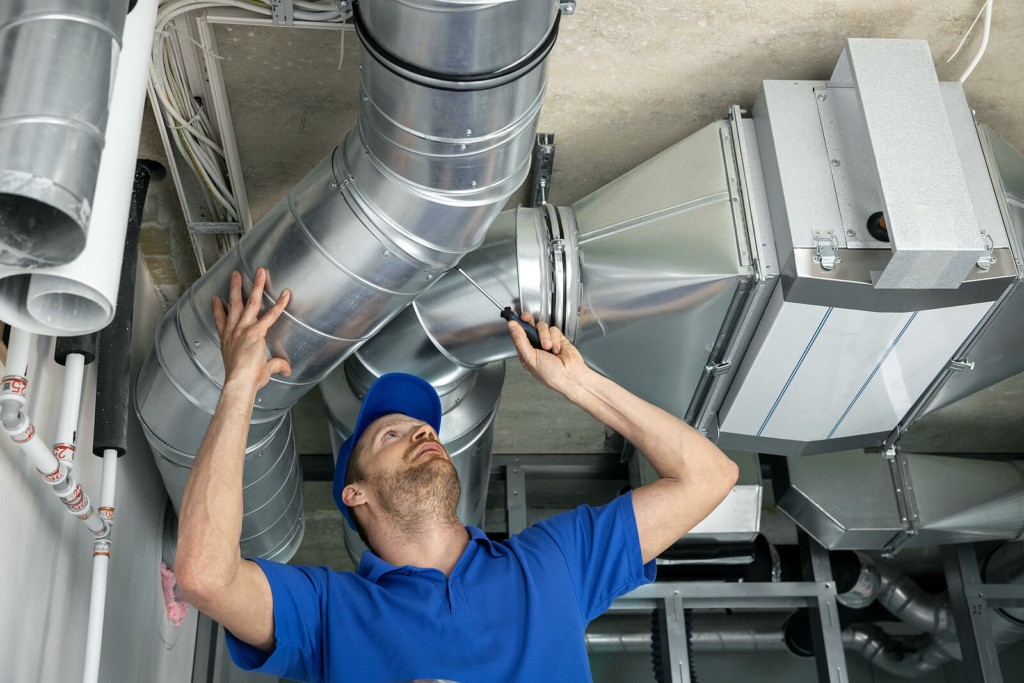When we think about energy savings in our homes, we often focus on high-efficiency appliances and insulation. While these factors are crucial, there’s another component that significantly impacts energy efficiency but often goes unnoticed: the condition of your ductwork. The ductwork plays a vital role in delivering conditioned air throughout your home. However, if it’s in poor condition, it can lead to energy wastage and reduced efficiency. In this blog post, we’ll explore how the condition of your ductwork affects energy savings and provide insights into optimizing its performance.
- Air Leakage:
Leaky ductwork is one of the primary culprits behind energy loss in HVAC systems. According to the U.S. Department of Energy, ductwork leaks can account for up to 30% of energy loss in a typical home. When there are gaps, cracks, or disconnected joints in the ducts, conditioned air escapes into unconditioned spaces such as attics, crawl spaces, or wall voids. As a result, your HVAC system has to work harder to compensate for the lost air, leading to increased energy consumption and higher utility bills.
- Inefficient Air Distribution:
Ductwork that is poorly designed or improperly installed can cause inefficient air distribution throughout your home. If the ducts are not sized correctly or have excessive bends and twists, it can impede the airflow, reducing the system’s efficiency. Inefficient air distribution leads to uneven heating or cooling, as some rooms receive less conditioned air than others. As a result, you may find yourself constantly adjusting the thermostat to achieve comfort, wasting energy in the process.
- Insufficient Insulation:
Ductwork that lacks proper insulation can contribute to energy loss as well. In unconditioned spaces, such as attics or crawl spaces, uninsulated ducts can be subject to temperature extremes. In the summer, hot air can infiltrate the ducts, forcing your HVAC system to work harder to cool the air. Similarly, in winter, cold air can enter the ducts, requiring more energy to maintain warmth. Insulating the ductwork helps minimize these temperature fluctuations, reducing energy consumption and improving overall system efficiency.
- Restricted Airflow:
Obstructions or blockages in the ductwork, such as debris, dust, or collapsed sections, can restrict the airflow. Reduced airflow not only diminishes the comfort levels in your home but also increases energy usage. When the system struggles to push air through restricted ducts, it consumes more energy to maintain the desired temperature. Regular inspections and cleaning of the ductwork can help identify and remove any obstructions, ensuring efficient airflow and optimized energy savings.
- Professional Duct Sealing:
One of the most effective ways to improve energy efficiency is through professional duct sealing. By sealing the gaps, cracks, and leaks in the ductwork, you can prevent conditioned air from escaping and unconditioned air from entering. Professional duct sealing ensures a proper seal throughout the duct system, minimizing energy loss and improving the overall performance of your HVAC system. It’s a worthwhile investment that can result in substantial energy savings over time.
Conclusion:
The condition of your ductwork has a significant impact on energy savings and the overall efficiency of your HVAC system. Leaky ducts, inefficient air distribution, insufficient insulation, and restricted airflow can all lead to energy wastage and increased utility bills. By addressing these issues through professional duct sealing, proper insulation, and regular maintenance, you can optimize your energy savings, enhance home comfort, and contribute to a greener environment. Consult with HVAC professionals to assess the condition of your ductwork and take the necessary steps to maximize the efficiency of your home heating and cooling system.

